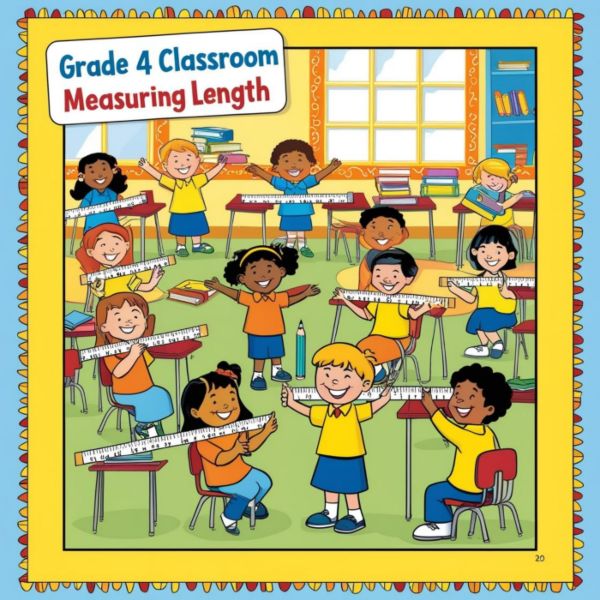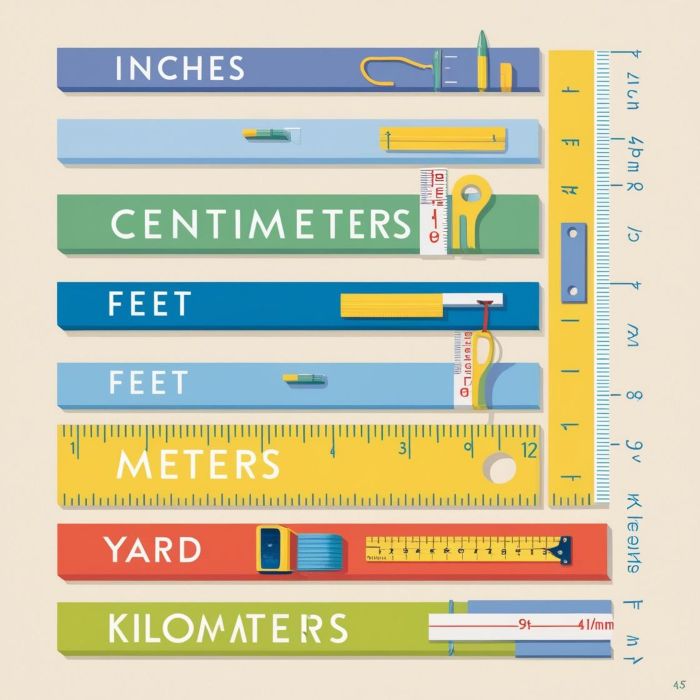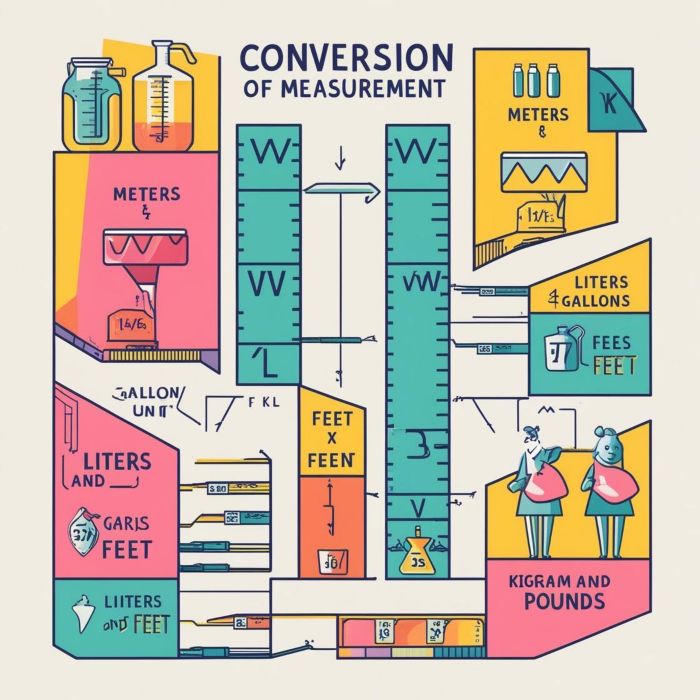Measurement of Length: A Fun and Easy Guide for Grade 4
Measuring length is definitely one of the most common things we do in math every day. When you measure how tall you are, how long your pencil is, or how far your school is from home, you are using the concept of length. Length helps us understand how big or small something is.
In this lesson, we learn how to measure length, learn different units of measurement, and then try to convert between bigger and smaller units. We'll also see how to add and subtract lengths with and without unit changes!

How to Measure Length
You want to know the length of an object. You will need a measuring tool. And here are some of the common tools

-
Ruler – To measure short lengths, such as the height of a pencil or a book.
-
Measuring Tape – For measuring larger objects like a furniture or a room.
-
Meter Stick – To measure objects that are even bigger such as a desk or a classroom.
Whenever you measure length, remember the following:
-
Start at 0 on the measuring tool.
-
Make sure the measuring tool is straight and parallel to the edge of the object.
-
Read the number where the object ends .
Units of Measurement for Length:
We measure length using different units based on how long or short the object is. Here are some common units in everyday use:

-
Millimeter (mm) – The smallest unit to measure length. There are 1000 millimeters in 1 meter.
-
Centimeter (cm) – A little bigger than a millimeter. There are 100 centimeters in 1 meter.
-
Meter (m) – The standard unit for measuring length. It is used for measuring medium-length objects.
-
Kilometer (km) – The largest unit for measuring length. It is used for measuring long distances, like the distance between cities. There are 1000 meters in 1 kilometer.
Conversion of Units of Measurement:
We sometimes convert one unit of length into another unit. Here are some simple conversion rules:

-
1 meter (m) = 100 centimeters (cm)
-
1 meter (m) = 1000 millimeters (mm)
-
1 kilometer (km) = 1000 meters (m)
-
1 centimeter (cm) = 10 millimeters (mm)
You can multiply or divide depending on the direction you are going (to move from larger units to smaller units or small units to large units).
Use Appropriate Measurement Units
Choose the correct unit based on what you're measuring. Here are a few tips.
-
Use millimeters for very small things, such as the point of a pencil.
-
Use centimeters for familiar objects, such as books and your shoes.
-
Use meters for objects that are somewhat large, such as a room or a table.
-
Use kilometers (km) to measure longer distances, such as how far you live from your school.
Converting Units of Length: Larger and Smaller Units
When converting between units of length, remember:
To convert from a larger unit to a smaller unit (such as from meters to millimeters), you multiply:
-
1 meter = 1000 millimeters
-
3 meters = 3000 millimeters
To convert from a smaller unit to a larger unit (such as from millimeters to meters), you divide:
-
1000 millimeters = 1 meter
-
5000 millimeters ÷ 1000 = 5 meters
Operations on Measurement of Length:
Sometimes we need to add or subtract lengths. Here's how you can do it:
Addition of Lengths:
If both lengths are in the same unit, just add them up!
Example: 3 meters + 2 meters = 5 meters.
If the lengths are in different units, convert them to the same unit first, then add.
Example: 2 meters + 150 centimeters:
Converting 2 meters into centimeters: 2 meters = 200 centimeters.
Example: 200 cm + 150 cm = 350 cm.
Length Subtraction:
If both lengths are measured in the same unit, subtract direct.
For instance; 5 meters - 2 meters = 3 meters
If both lengths are measured in different units, first change their length measurements to the same unit and then subtract.
For instance; 5 meters - 300 centimeters:
Converting 5 meters into centimeters: 5 meters = 500 centimeters.
Now subtract: 500 cm – 300 cm = 200 cm.
Fun Facts
A Millimeter is Tiny!
A millimeter is so small that 10 millimeters make just 1 centimeter! You may use millimeters to measure things like the width of a pencil or the thickness of a paper clip.
You Can Measure the Length of a Football Field in Meters!
A football field is about 100 meters long. That's a lot of meters lined up.
A Centimeter is About the Width of Your Fingernail!
The length of an average fingernail is roughly 1 centimeter. Therefore, if you ever forget just how big a centimeter is, just look at your fingers!
One Kilometer Equals 10 Football Fields!
A kilometer is 1000 meters long. That means you could fit about 10 football fields in just one kilometer. Now, that's a lot of running!
The Tallest Tree in the World is Measured in Meters!
This is the world's tallest tree, a Redwood tree, in California, measuring about 115 metres in height. That is even taller than a 30-storey building.
Rulers Aren't Just for Measuring Objects!
Rulers are not just useful to measure lengths. You can also use them when painting or designing to draw straight lines!
You Walk About 1 Kilometer in 12-15 Minutes!
It takes most people approximately 12 to 15 minutes to walk at a normal pace over 1 kilometer. That's how long it would take you to walk over to your friend's house!
From Small to Big: Conversions are Awesome!
If you have 100 centimeters, that's the same as 1 meter! Conversions between units of measurement are like an entertaining brain teaser!
The Longest Day Ever Measured
The longest distance any manned vehicle travelled on land is more than 9000 kilometers-that's nearly the distance around the Earth!
You Height is Generally Measured in Meters and Centimeters!
When you go to get measured at your doctor's office, you may hear that your height is something like 1.3 meters or 130 centimeters
Quiz
1. How long is a pencil in centimeters?
- A) Kilometers
- B) Meters
- C) Millimeters
- D) Centimeters
2. How many millimeters are there in 2 meters?
- A) 200 millimeters
- B) 100 millimeters
- C) 1000 millimeters
- D) 2000 millimeters
3. If the book is 25 cm in length and the ruler is 30 cm in length, how many centimeters would be the total length when both are placed end to end?
- A) 50 cm
- B) 55 cm
- C) 25 cm
- D) 30 centimeters
4. How many meters are in 1500 millimeters?
- A) 1.5 meters
- B) 15 meters
- C) 150 meters
- D) 0.15 meters
5. You have a rope that is 3 meters long. How many centimeters is the rope?
- A) 30 centimeters
- B) 300 centimeters
- C) 3000 centimeters
- D) 3 centimeters
FAQs
What Is Length for Grade 4?
Length is the measurement of how long something is or how tall something is. The units used to measure length include millimeters, centimeters, meters, and kilometers.
What Are the Measurements for Grade 4?
Grade 4 uses millimeters, centimeters, meters, and kilometers in measuring length and tells about converting the values from one unit to another.
What Are the 4 Types of Length?
The four types of measuring length are millimeters (mm), centimeters (cm), meters (m), and kilometers (km), which are all applicable to varied object sizes.
What Are the Four Ways of Measuring?
The measurements in length can be made by the use of a ruler, tape measure, meter stick, or measuring wheel, according to the size of the object.
Practice Worksheet
Easy Level Worksheets
Intermediate Level Worksheets
Advanced Level Worksheets
Related Links
CBSE Schools In Popular Cities
- CBSE Schools in Bangalore
- CBSE Schools in Mumbai
- CBSE Schools in Pune
- CBSE Schools in Hyderabad
- CBSE Schools in Chennai
- CBSE Schools in Gurgaon
- CBSE Schools in Kolkata
- CBSE Schools in Indore
- CBSE Schools in Sonipat
- CBSE Schools in Delhi
- CBSE Schools in Rohtak
- CBSE Schools in Bhopal
- CBSE Schools in Aurangabad
- CBSE Schools in Jabalpur
- CBSE Schools in Jaipur
- CBSE Schools in Jodhpur
- CBSE Schools in Nagpur
- CBSE Schools in Ahmednagar
- CBSE School In Tumkur











